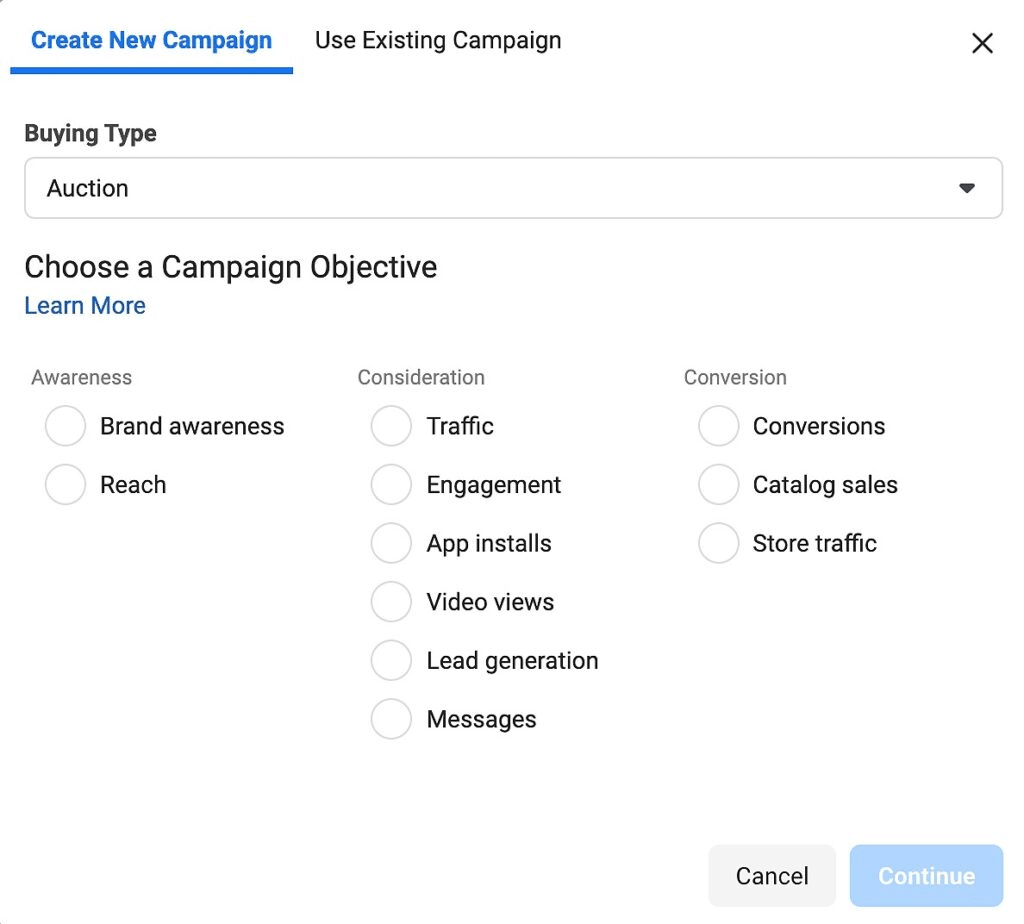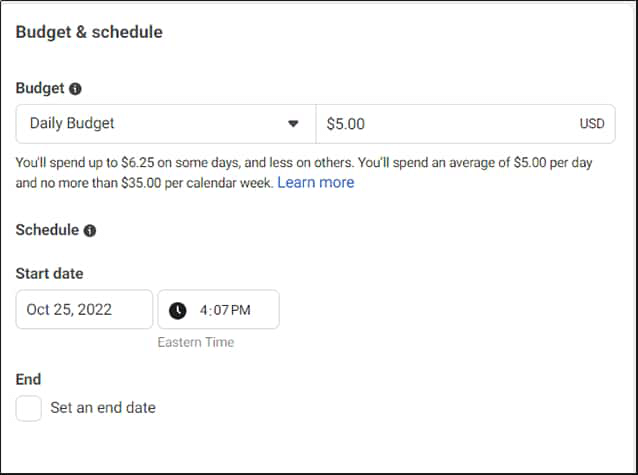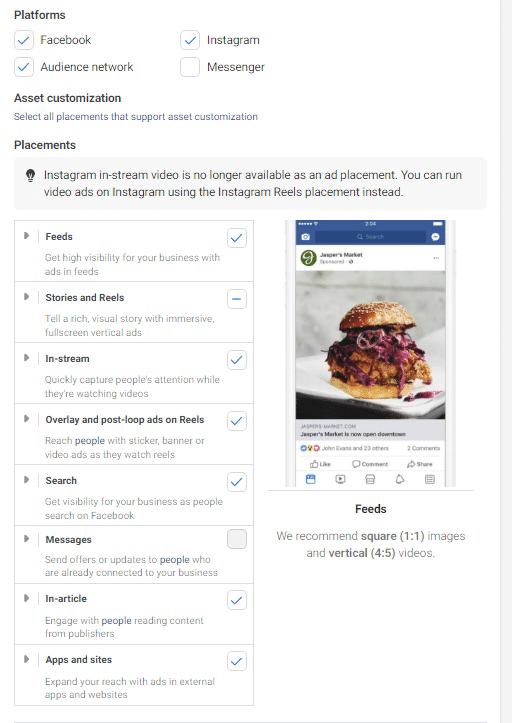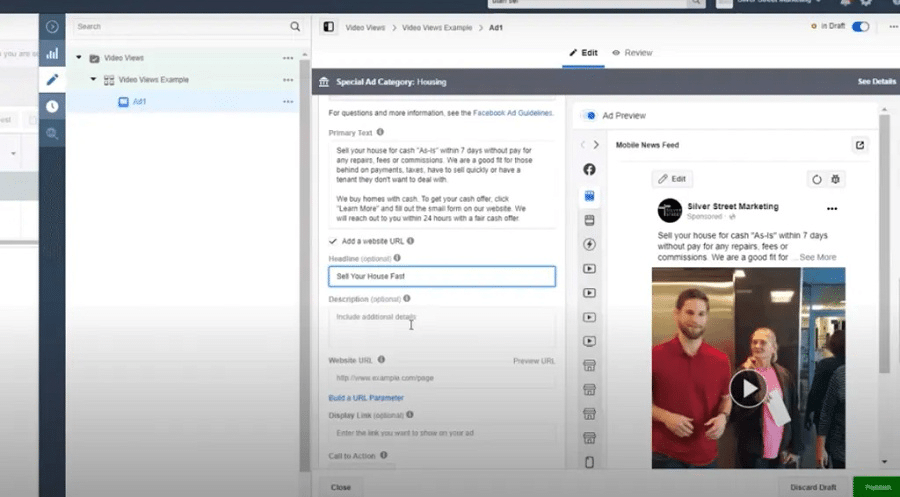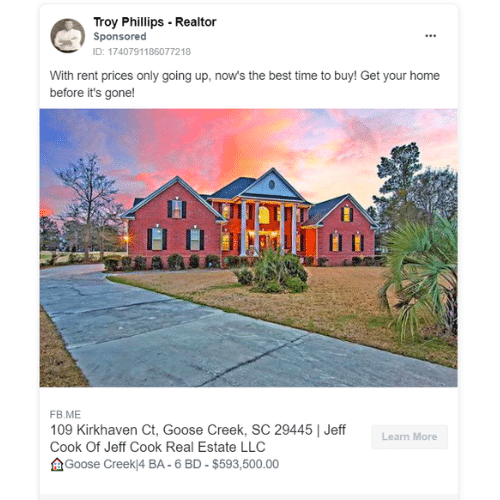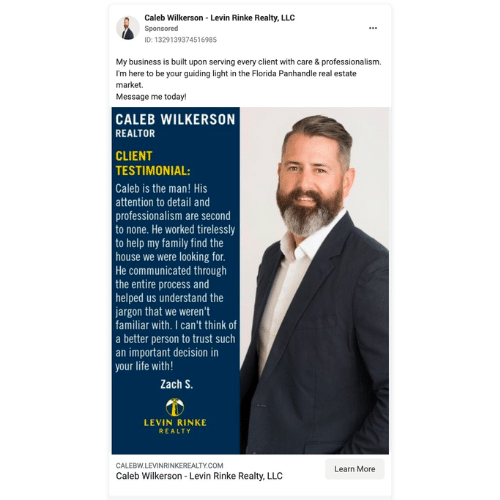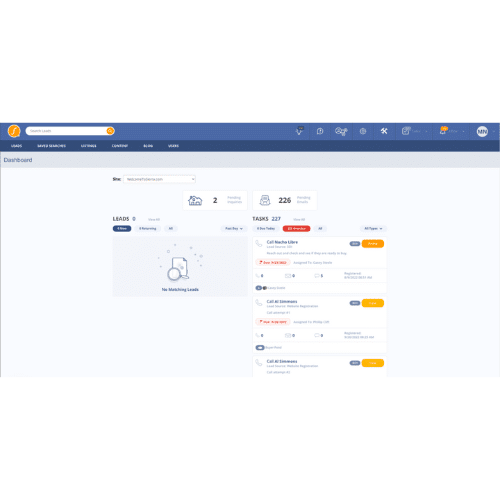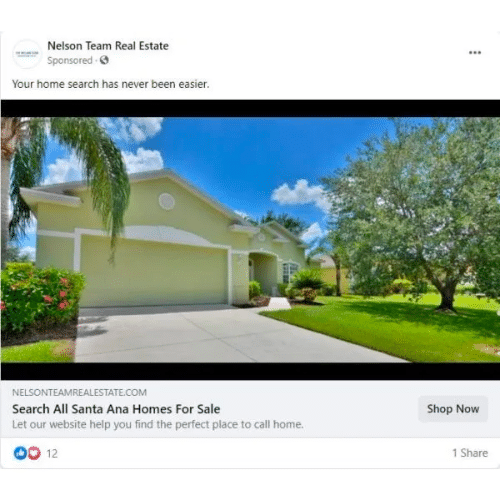With over three billion monthly active users, real estate Facebook ads are a great tool to help you generate leads, promote properties, and build brand awareness. But it’s not just creating some catchy images with clever headlines. Agents who master the strategic approach to Facebook ads reap financial benefits from using the platform. Here are the top ten best practices to get you started on creating ads that resonate with your audience.
Why Use Real Estate Facebook Ads
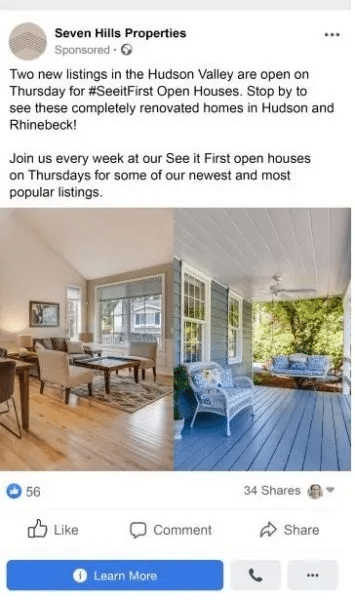
Before we get into best practices and examples, let’s discuss why Facebook ads are so lucrative for your real estate business. Facebook ads for realtors have become an integral component in the real estate industry today as they help agents increase their reach and client base within their target markets. Leveraging Facebook’s enormous user database and sophisticated targeting options enhances your marketing efforts.
Here are some compelling reasons you should use real estate Facebook ads to grow your business:
- Large potential audience: Considering that Facebook hosts over 3 billion monthly active users, no other platform provides this kind of reach for the varied audience it has. It gives you the visibility to let your potential clients know what you offer.
- Advanced targeting options: With detailed targeting on Facebook, you get to the demographics, interests, and behaviors of consumers to ensure the right people see your ads.
- Cost-effective advertising: Offers options for flexible budgeting. Agents can start low and increase when the results come. Facebook ads cost approximately $9.78 per 1000 impressions.
- High engagement rates: Captivating visuals and messaging in real estate ads will drive high engagement, meaning more clicks and inquiries turn into conversions.
- Dynamic ad formats: Carousel, slideshow, and collection ads give agents creative and interactive representations of their listings.
- Retargeting capabilities: It provides features for retargeting users who have already shown interest in your listings to increase chances of conversion.
- Detailed analytics: Facebook analytics tools offer great value with good insight into the performance of ads for data-driven decisions on campaign optimization.
- Mobile-friendly platform: Since many Facebook users log into the network from their mobile devices, your ads reach potential clients wherever they might be.
- Branding: Thought-out and consistent ads will elevate your brand’s awareness and prestige, making you a trustworthy name in real estate.
- Competitive advantage: It could set you apart from the competition who hasn’t started using or isn’t using the power of Facebook ads to their advantage.
How to Create Facebook Ads
Creating Facebook ads is a pretty simple process. If you’re not sure how to do it, I can help with that! Here are the steps, but for more detailed information with images, scroll through each step below:
- Step 1 – Open your Facebook Ads Manager account
- Step 2 – Select your campaign
- Step 3 – Create and name your campaign
- Step 4 – Set a posting schedule and budget
- Step 5 – Identify your target audience
- Step 6 – Organize your ad placement
- Step 7 – Create your ad
Scroll these images for the details 👉
Best Practices & Examples of Realtor Facebook Ads
Effective Facebook ads are essential for acquiring buyer and seller leads. In that respect, you would want your ads to be engaging, focused on performance, and lead generation-oriented. Here are the top strategies, with examples, to help you craft compelling Facebook ads that drive results in the competitive real estate market.
1. Know Your Audience
Knowing your audience is the very basis of any effective ad campaign. Using advanced targeting on your Facebook ads for real estate, agents can find probable buyers and sellers according to demographics, interests, and behaviors. For instance, if you deal in luxury homes, target those in a higher income bracket or those interested in luxury living. By zeroing in on the ideal target audience, your real estate ads are directly in front of the people who would want your services.
Example: Check out the sponsored ad on Facebook below, targeting a demographic interested in upscale properties in Palm Springs. The ad works well due to its high-quality visuals, which reflect the luxurious features of the property through magnificent architecture and a desirable location.
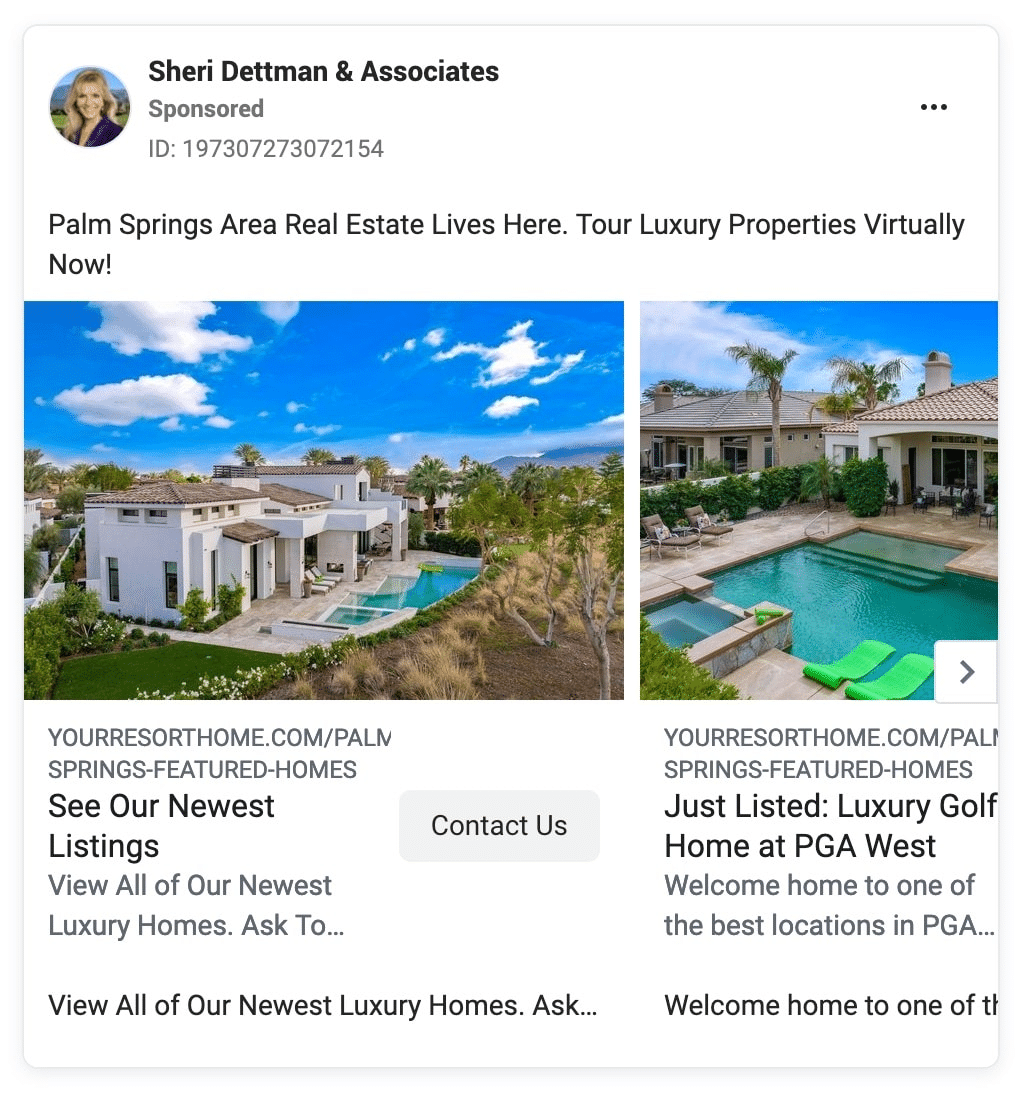
CINC is a robust lead gen and conversion platform with all the tools and resources an agent needs to get the most value from any Facebook ad campaign. With CINC’s proprietary demographic targeting, any real estate team or agent can perform Facebook real estate lead generation based on location and demographic factors. With CINC, agents can build target-effective ads, driving high-quality leads to their listings.
2. Use High-quality Images & Videos
Higher-quality visuals in your Facebook ads for realtors attract more eyeballs, facilitating increased views and creating more chances of sparking interest and buyer inquiries. High-resolution photos and videos can capture the best property views and are more appealing to buyers. Agents can provide a comprehensive property view by including professional photographs, virtual tours, or drone footage. Ensure your visuals are well-lit and clear, and give all details about this home.
Example: This Facebook ad contains an image of a high-end property with an expansive yard and a large house. The viewer can see how big it is and picture themselves living in it. The ad places the proper attributes of the house in the limelight and entices any possible purchaser with compelling visuals to want more information or show interest in viewing the property.
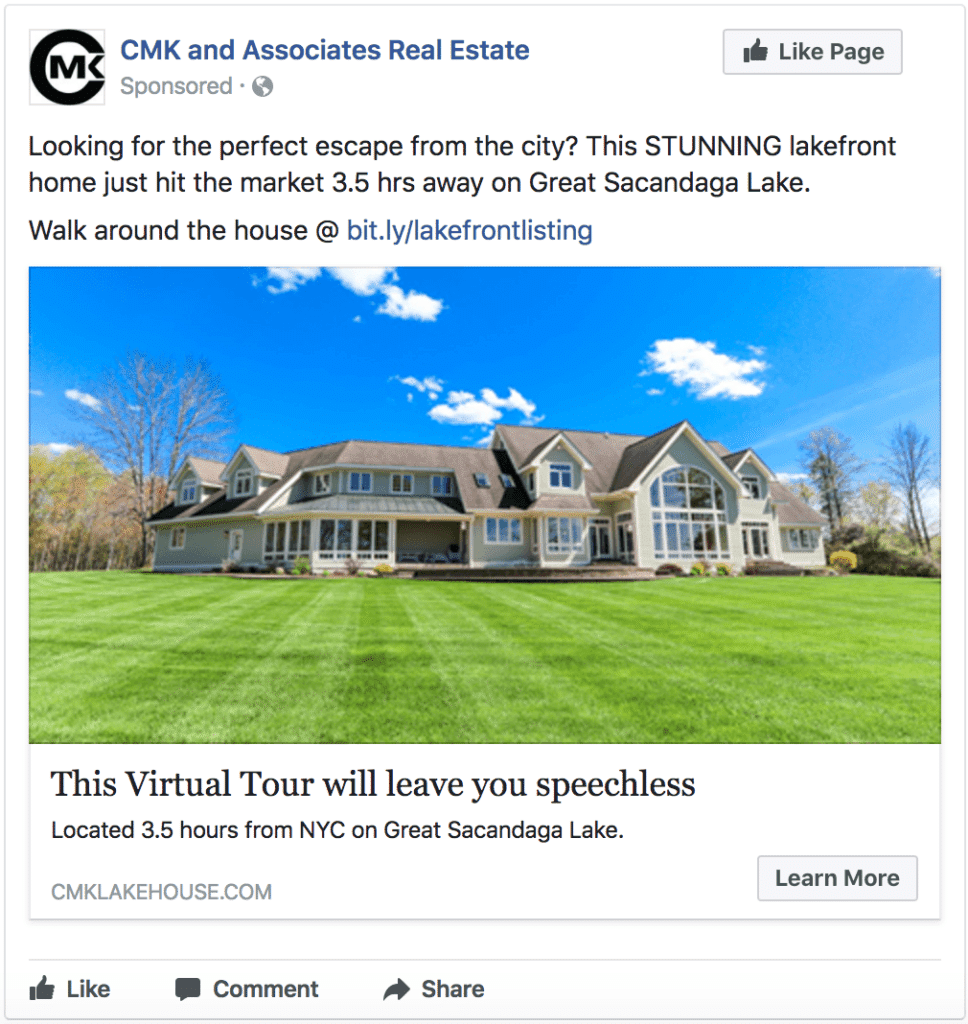
3. Craft Compelling Headlines
Your headline is the first thing people will see, so it’s imperative to make it count. The headlines you come up with should be clear, concise, and intriguing. Bring out your property’s selling points or distinctive features to gain maximum eyeballs instantly. A good headline on Facebook ads for real estate should convey the main benefit or unique aspect of the listing in just a few words, standing out and enticing potential clients to click through and read more.
Example: The below Facebook ad is supposed to lure the audience into buying a house in a booming rental market. The heading, “With rent prices only going up, now’s the best time to buy!” is catchy and will motivate a viewer to grab the opportunity immediately since the demand for rental housing is about to surge. High-resolution images and aptly tailored messages will get views and trigger interest in the property showcased.
Market Leader offers robust marketing solutions to help agents succeed with their real estate lead generation Facebook ads. It allows the agent to create and manage ad campaigns that reach the right audience segments. With one-click social media posts on Facebook and LinkedIn, agents can share listings and promotions on as many platforms as possible, maximizing online presence and reach.
4. Include a Strong Call-to-Action (CTA)
A call-to-action (CTA) will tell your potential clients what to do next. Effective CTAs drive user action, turning interest into concrete actions like scheduling viewings or contacting you that can lead to sales.
Use action-oriented phrases, such as “Schedule a Viewing,” “Learn More,” or “Contact Us Today.” It will encourage interest and involvement. Placing a well-written CTA will help in increasing conversion rates by instructing what the next steps should be.
Example: The call to action, “Learn More,” is distinctly placed in the ad’s caption, encouraging viewers to click through for more information about the property. This placing allows interested viewers to easily take the next step in effectively creating leads and getting potential buyers flowing toward the investment opportunity in the growing rental market area.

5. Leverage User-generated Content
Testimonials and client reviews can help agents build trust and credibility with prospective clients. User-generated content can be testimonial videos or client photos, which can be more effective than regular Facebook real estate ads. Sharing your testimonials and reviews enhances your credibility and allows potential clients to choose you as their agent confidently.
Example: Although the post below doesn’t feature any property, this client testimonial works very nicely in creating some trust and credibility. Sharing a positive experience with one of your satisfied clients sets up that connection with the prospective buyer, giving them assurance in the quality and reliability of your service. It showcases social proof, leaving a strong impression on viewers considering working with you for their real estate needs.
Sierra Interactive is a real estate lead management platform to help agents optimize leads received from their Facebook ad campaigns. Inside the platform, multiple integrations are available to connect CRM with Facebook Ads so agents can better capture and put leads in nurture. Sierra Interactive can also help agents create IDX websites to redirect potential clients from their Facebook ads to a website for further detailed information about their services and other listings.
6. Utilize Facebook Ad Formats
Experiment with different ad formats, such as carousel ads, slideshow ads, and collection ads. Carousel ads are great when trying to highlight properties or many features in a single ad, and slideshow ads create a video through the slideshow of a series of images. Mix and match all these ad formats to keep your advertising fresh and engaging, increasing the likelihood of attracting and retaining potential clients.
Example: The Facebook ad below includes the carousel option, providing users with a live, engaging format for looking at the home’s best features in one ad. The carousel format shows extensive property detail, keeping prospects interested in inquiring about the property. Accompanied by good visuals, well-informative image captions make the ad quite effective at catching the target audience’s attention.

7. Highlight Unique Selling Points
Agents should always emphasize what makes the property or service unique. It could be an ideal location, a modern kitchen, or old-fashioned high-quality customer service that gives your ad an edge. The more of these elements you have, the greater separation from competing listings and better your ad’s appeal to the right buyers. You will clearly articulate what puts your listings in a class of their own.
Example: The agent gives prospective clients clear, easily digestible information in this bullet-point format above. Following through the ad, it’s easier for people to understand the property’s features and benefits. Bulleting the primary selling points improves readability, ensuring that all essential details are conveyed to the potential buyers for effective decision-making.

8. Keep Ad Copy Short & Sweet
A social media user’s attention span is very short. Keep the ad copy concise and to the point. Give only the most relevant details, sparing the potential client large blocks of text. This clear messaging engages interest more effectively. Use bullet points or short paragraphs so users can quickly scan and grasp the main details.
Example: Keeping ad copy as concise as possible, like the example below, makes getting essential information across quickly. With a focus on relevant information and in as few words as possible, the ad can grab interest and pressure action without bombarding potential clients with too many words. This succinctness enhances general ad efficiency, making it an excellent strategy for generating leads or attracting buyers.
Top Producer Social Connect is a one-stop shop that helps real estate agents solve the mystery of social media advertising, especially on Facebook. This platform provides ease in maintaining an online presence. The expert ad creation is simply done. Top Producer Social Connect’s advanced automatic lead nurturing ensures prospective clients receive customized content throughout a four-month period. The platform’s integrated CRM helps agents manage and follow up with leads efficiently, ensuring no missed opportunity.
FAQs
How much are Facebook real estate ads?
The cost of a real estate ad on Facebook can vary greatly depending on a few factors like budget, audience, ad format, and the level of competition in your market. Typically, Facebook ads run on either a pay-per-click or cost-per-impression model. You can set daily and lifetime budgets for your campaigns, which will give you flexibility based on the advertising goals or the business’s financial constraints. Again, an agent can expect to pay anywhere from a few cents to a few dollars per click. Still, proper setting and tracking will help you control spending for maximum return on investment.
How do I create a real estate ad on Facebook?
To create a real estate ad on Facebook, follow these steps so that the ad can go out effectively to your target audience. Go to Facebook Ads Manager and click Create. Then, select an objective that corresponds to your aims—for instance, “Traffic” or “Lead Generation.” After that, identify your target audience by selecting demographics, interests, and behaviors relevant to the potential buyers/sellers. Design an ad by uploading high-quality images or videos of your properties and write compelling ad copy with a solid call to action. Finally, set your budget and schedule, check over your ad for any mistakes, and then click Publish to launch your campaign. Monitor and optimize your ad performance consistently by using the analytics tools Facebook provides.
What objective should I be using for real estate Facebook ads?
The best objective of Facebook ads for real estate depends on your specific marketing goals. The common goals are “Traffic” for driving visitors to your website or listings, “Lead Generation” for collecting contact information from potential clients, or “Conversions” for encouraging specific actions like scheduling a viewing or signing up for a newsletter. If you want brand awareness, use the “Brand Awareness” or “Reach” objectives to show your listings to more people. Each of these objectives corresponds to different stages of the buyer’s journey, so select the one most appropriate for your current campaign goals.
Bringing It All Together
Real estate Facebook ads can increase your business exponentially because you reach a large, targeted audience. Knowing how much they cost allows you to create an appropriate budget for them and get maximum ROI. With a well-defined step-by-step process in creating your ad, from choosing the right objective to high-quality visuals and a strong call to action, it will be compelling and engaging.
Have you used Facebook ads to boost your listings and real estate business? Tell us your tips!











